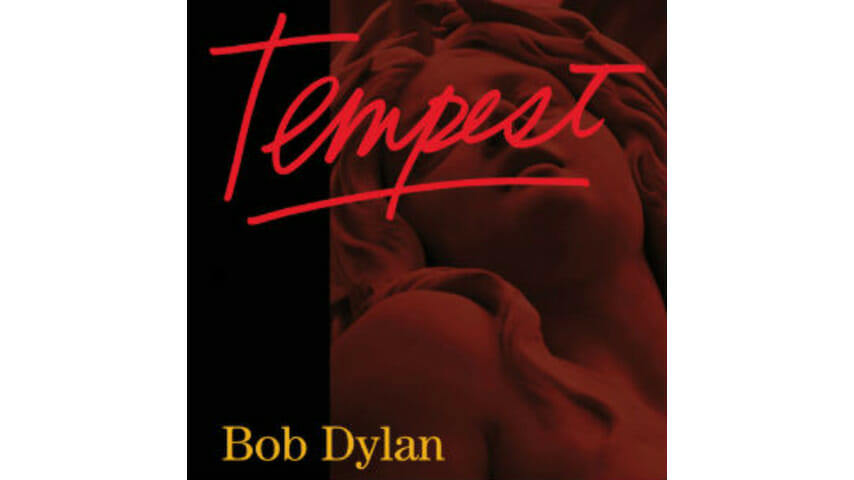Bob Dylan: Tempest

I’m staying up late
And I’m making amends
While the smile from heaven descends
If love is a sin and beauty is a crime
All things are beautiful
In their time
-”Scarlet Town”
Can anyone remember the last time there was so much hype and publicity surrounding a new Bob Dylan album? The ominously titled Tempest is his 35th collection to hit the record stores, 50 years after his self-titled debut came out in 1962, and in the weeks prior to its release, critics almost universally began to sing its praises in advance of the public hearing a single note. Some, like Rolling Stone’s Mikal Gilmore have gone so far as to venture that Tempest may be the greatest album of Dylan’s long career.
Dylan fans can be a strange lot, with many conjecturing that as The Tempest was the title of Shakespeare’s last play, it may also indicate that it is the last time the septuagenarian singer will enter the recording studio. Whether this is true or not, or whether Tempest ranks in the very top of Dylan’s pantheon of albums doesn’t really matter very much; those kind of accolades or inquiries have always rested uncomfortably with Dylan, and this time around they’re probably beside the point.
But, it is certainly safe to say that Tempest—even in the company of other great recent albums like Modern Times and Love and Theft—is one of the most cohesive, musically and lyrically intense records he’s put together in years.
Tempest is an album that works on many levels. Taken as sound or aural sculpture, the songs take the listener through a dark ramble through the back roads of American popular music. Every musical phrase, note, carries something that suggests more than itself. Each melody is weighed down with memory, reminding the listener of real and imagined pasts, old struggles, hinting that there’s a world rapidly slipping through our fingers, if it’s not already long gone. It’s easy to hear the echoes of Bob Wills, Hank Williams, Sonny Boy Williamson and ancient Childe ballads from another fallen empire running through Tempest. But, these snatches of melody weren’t conjured to provide light entertainments or exercises in nostalgia. They’re imbued with intimations of mortality, backward glances and all different kinds of summing up.
-

-

-

-

-

-

-

-

-

-

-

-

-

-

-

-

-

-

-

-

-

-

-

-

-

-

-

-

-

-

-

-

-

-

-

-

-

-

-

-








































